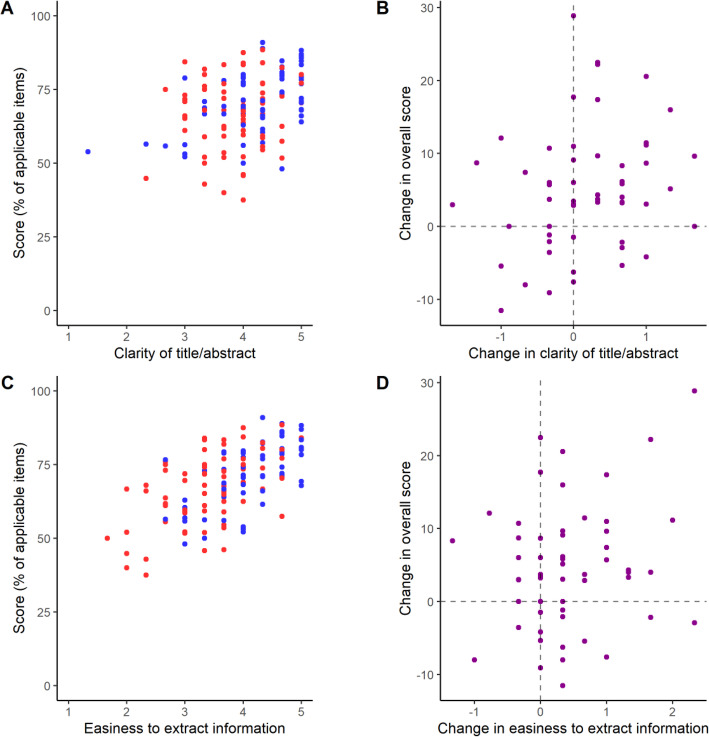Fig. 7.
Quality of reporting by subjective scores. a Overall reporting scores by title/abstract clarity in the independent samples. Pearson’s correlation: r = 0.38, 95% C.I. [0.23, 0.51], p = 3.1 × 10− 6, n = 144 (all articles); r = 0.12, 95% C.I. [− 0.11, 0.35], p = 0.29, n = 72 (bioRxiv); r = 0.55, 95% C.I. [0.36, 0.69], p = 6.3 × 10− 7, n = 72 (PubMed). b Changes in overall reporting scores by changes in title/abstract clarity in the paired sample. Pearson’s correlation: r = 0.25, 95% C.I. [− 0.01, 0.68], p = 0.06, n = 56. c Overall reporting scores by easiness to extract information in the independent samples. Pearson’s correlation: r = 0.59, 95% C.I. [0.47, 0.69], p = 8.7 × 10− 15, n = 144 (all articles); r = 0.54, 95% C.I. [0.35, 0.68], p = 1.04 × 10− 6, n = 72 (bioRxiv); r = 0.60, 95% C.I. [0.43, 0.73], p = 2.2 × 10− 8, n = 72 (PubMed). d Changes in overall reporting scores changes in easiness to extract information in the paired sample. Pearson’s correlation: r = 0.20, 95% C.I. [− 0.06, 0.44], p = 0.13, n = 56. In all panels, bioRxiv articles are in red and PubMed ones are in blue, while differences between paired articles are shown in purple

